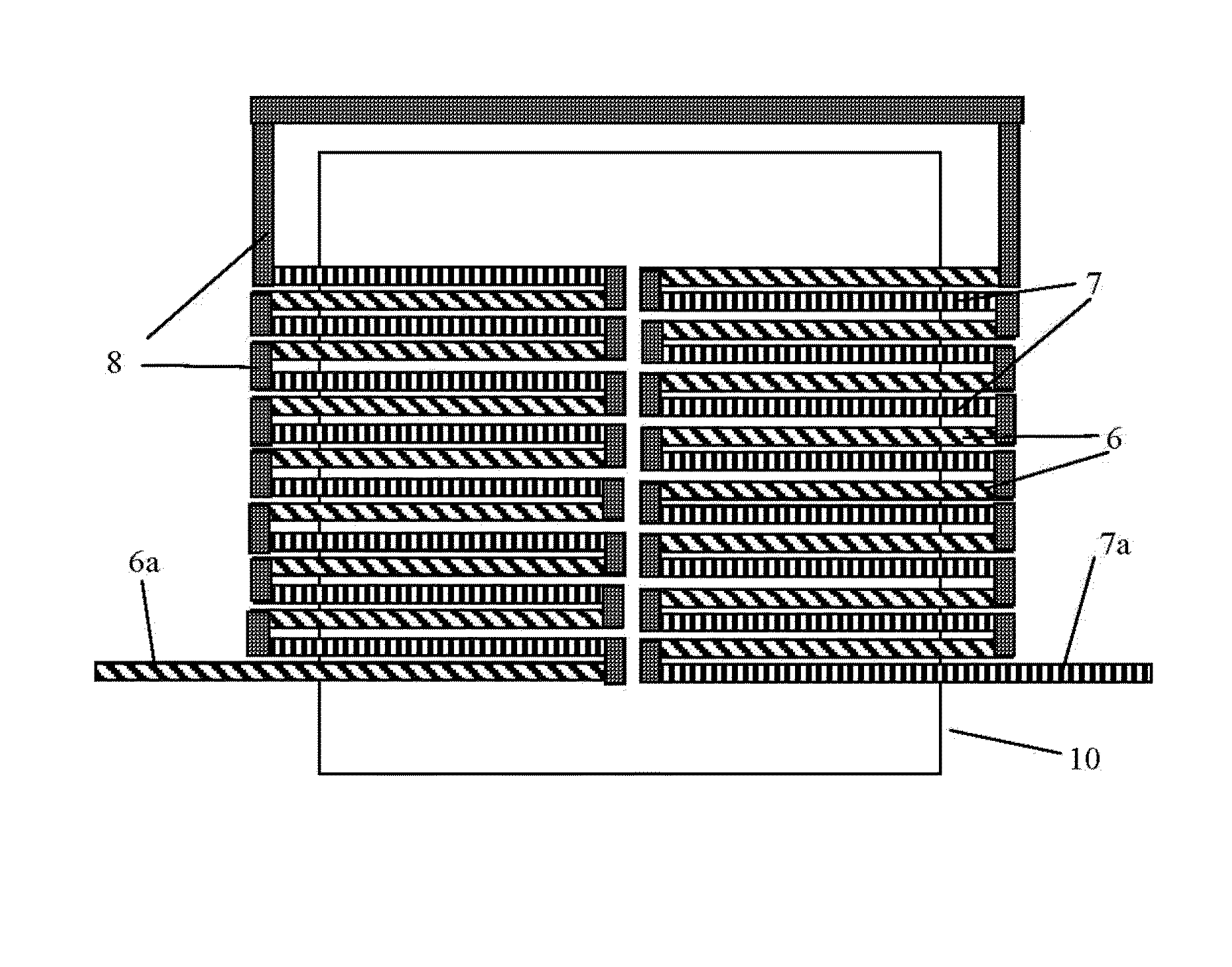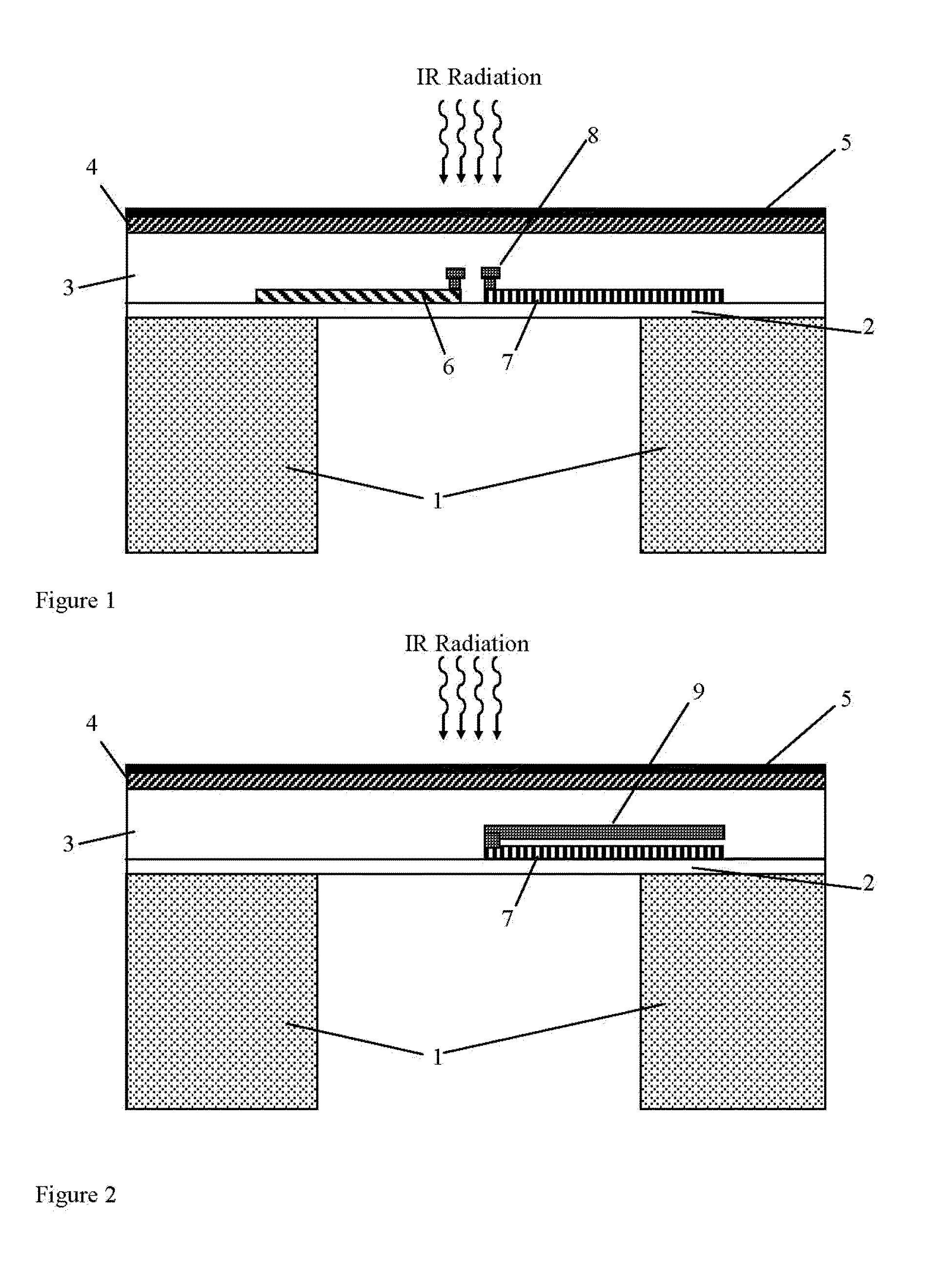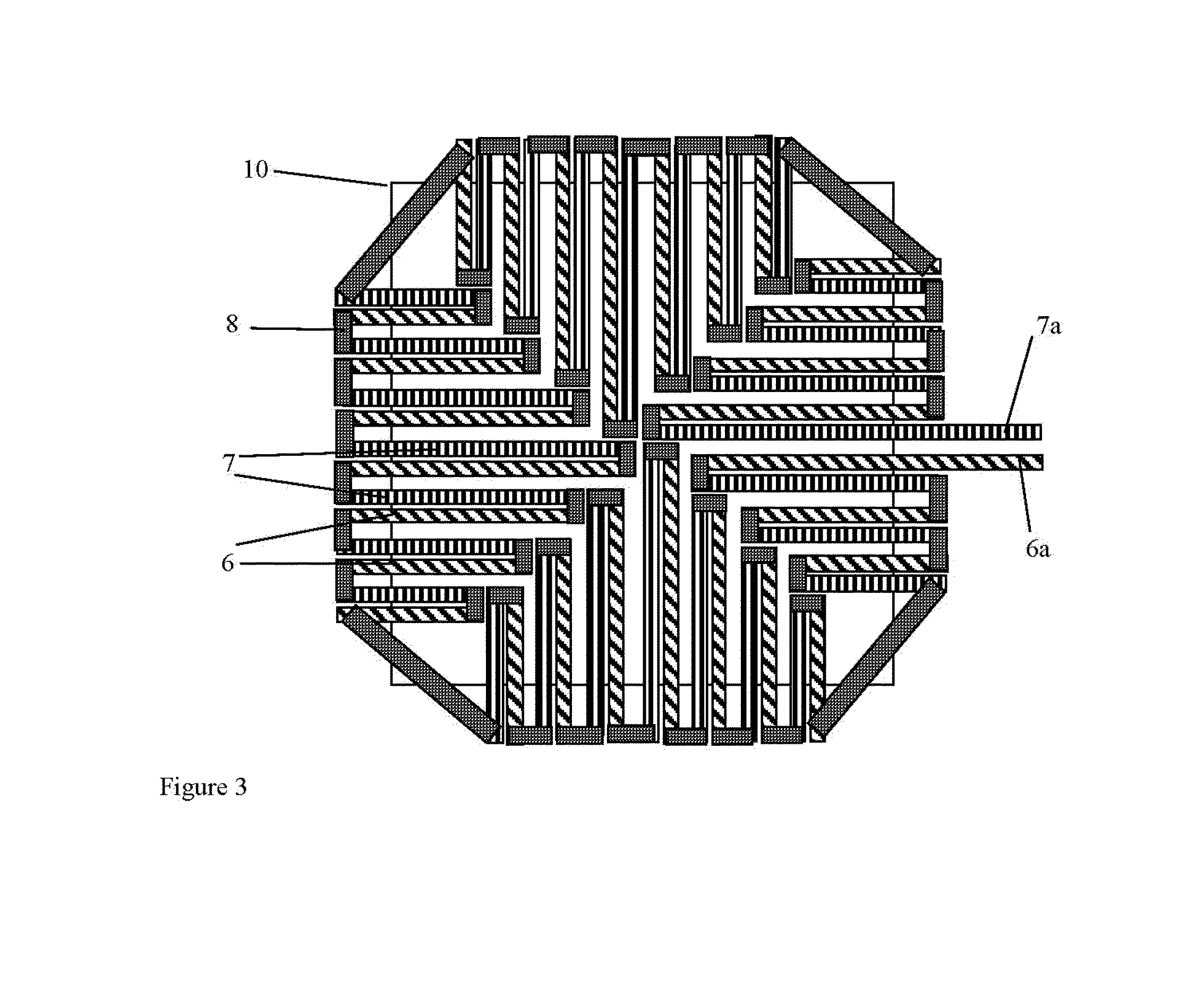IR detector
a detector and infrared technology, applied in the field of infrared detectors, can solve the problems of large increase in voltage difference across the thermopile, need biased voltage or current, and high cost of fabrication methods, so as to achieve high ir emissivity, improve performance, and high emissivity
- Summary
- Abstract
- Description
- Claims
- Application Information
AI Technical Summary
Benefits of technology
Problems solved by technology
Method used
Image
Examples
Embodiment Construction
[0071]FIG. 1 shows a schematic cross section of an IR detector made in SOI process. There is provided a membrane layer 2,3,4 which is supported on a silicon substrate 1. The membrane layer includes a buried oxide layer 2, dielectric layers 3 and a passivation layer 4. A thermopile is formed within the membrane layer consisting of several thermocouples connected together in series. FIG. 1 also shows the thermopile using single crystal silicon N+ 6 and single crystal silicon P+ 7 materials. The terminals of the thermopile where the electrical signal is generated are identified as 6a and 7a. These terminals could connect to pads (not shown) or to other read-out or signal processing circuits (not shown). A CMOS metal 8 is used to electrically connect the P+ and N+ layers in hot and cold thermal junctions. A metal layer (made within the CMOS process) is used to connect them to avoid a semiconductor P / N junction forming. A material with high IR absorption is grown or deposited on the top ...
PUM
 Login to View More
Login to View More Abstract
Description
Claims
Application Information
 Login to View More
Login to View More - R&D
- Intellectual Property
- Life Sciences
- Materials
- Tech Scout
- Unparalleled Data Quality
- Higher Quality Content
- 60% Fewer Hallucinations
Browse by: Latest US Patents, China's latest patents, Technical Efficacy Thesaurus, Application Domain, Technology Topic, Popular Technical Reports.
© 2025 PatSnap. All rights reserved.Legal|Privacy policy|Modern Slavery Act Transparency Statement|Sitemap|About US| Contact US: help@patsnap.com



